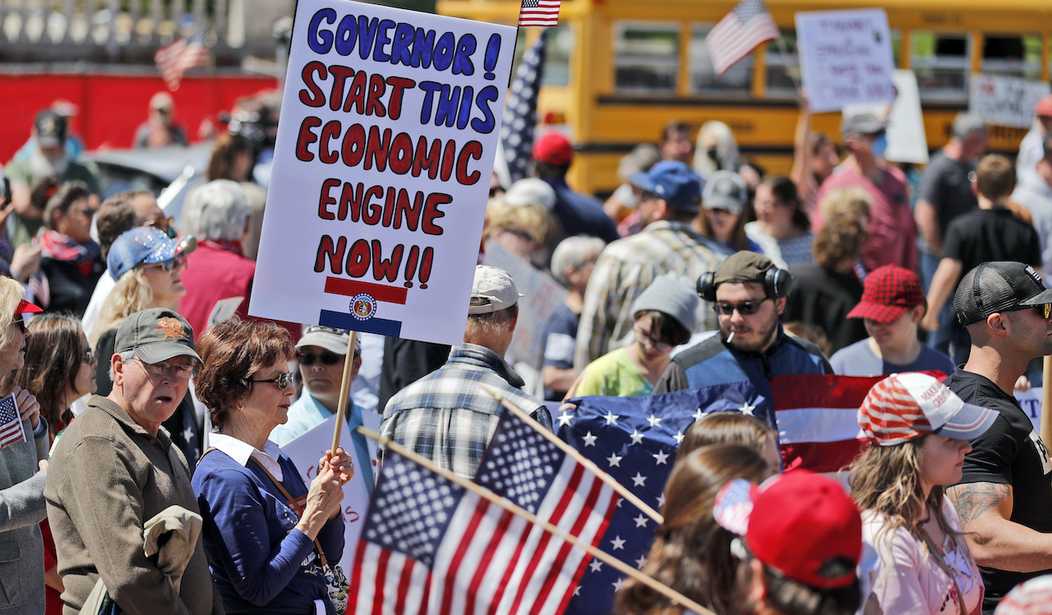Lockdowns to stop the spread of COVID-19 shaved 3.5 percent off of America’s 2020 GDP, psychologically damaged millions of children who got cooped up at home, and shuttered nearly 100,000 businesses for good. Yet according to a new study, these self-inflicted wounds may have been utterly in vain. It turns out that, after organizations began COVID mitigation efforts, schools and workplaces may have been safer than the homes where Americans had been cooped up.
University of Chicago economist Casey Mulligan ran the numbers, and he found that organizations that adopted prevention protocols became safer places than the wider community.
“Micro evidence contradicts the public-health ideal in which households would be places of solitary confinement and zero transmission,” Mulligan wrote in “The Backward Art of Slowing the Spread? Congregation Efficiencies during COVID-19.”
Recommended: Coronavirus Anxiety Costs More Lives Than the Lockdowns Save From COVID-19, Study Finds
“Instead, the evidence suggests that ‘households show the highest transmission rates’ and that ‘households are high-risk settings for the transmission of [COVID-19],'” Mulligan wrote, citing other studies on the pandemic.
In other words, stay-at-home orders represented an entirely wrong approach. Homes were not safe places of quarantine for families — rather, they increased the spread among households as Americans were unwilling to put up with the kind of health mitigation efforts that businesses had to implement.
“Schools, businesses, and other organizations implemented a range of prevention protocols – from adjusting airflow to installing physical barriers to monitoring compliance to administering their own testing services – that households did not, and perhaps could not,” Mulligan explained.
“Something in these organizations greatly reduced the spread, as suggested most clearly in the infection-source data from hospitals and health clinics as well as prevalence data from meat-processing plants,” the economist wrote. “Infections of in-person primary and secondary students and staff were more than twenty times more likely to be traced to the community rather than someone else in their school. COVID-19 prevalence among on-campus university students, in-person primary and secondary students and staff, and airline pilots is observed to be below the prevalence of comparable populations not engaged in these activities.”
How could this be true? If people isolate themselves and stay at home, wouldn’t the disease stop spreading? While such a quarantine could work, in theory, human beings are social animals in practice. As The Wall Street Journal editorial board put it, “Lockdowns were leaky at best with stir-crazy family members venturing out to see friends and relatives.”
While COVID-19 would likely have spread faster among large groups of people than it would among small groups of people if both groups engaged in similar practices, Mulligan observed that there were key differences between how businesses operated when they remained open. Larger groups of people have an incentive to spend on expensive methods of prevention, and people may be more willing to accept restrictions in larger group settings.
As Mulligan noted, organizations “impose prevention costs on members that households do not.”
In a particularly revealing example, “a number of University of Chicago students chose not to return to a campus with remarkably low infection rates because on-campus living quarters were more heavily regulated than before the pandemic with no commensurate reduction in residential fees.” It was simply more comfortable to live at home with fewer restrictions, assuming it was safe, than to live in a dorm with more restrictions, even if the dorm would, in fact, have been safer.
Mulligan’s study does not suggest that COVID-19 was not a serious threat nor that mitigation efforts were unnecessary. However, it does suggest that at-home quarantines may have done more harm than good in terms of preventing the spread — and that means some of the economic and social dislocation of the lockdowns likely proved in vain.
Recommended VIP: The Real Problem With Lockdowns
American businesses and schools were right to institute mitigation protocols. Had they failed to do so, businesses and schools might have spread COVID-19 faster than households did. Ultimately, however, staying at home did not prove to be a one-size-fits-all solution to the pandemic.
It is long past time Americans moved on from the lockdown mentality, especially considering the spread of COVID-19 vaccines. Normal economic life and normal schooling need to resume, with some precautions. Americans must put this self-imposed scourge behind us.









